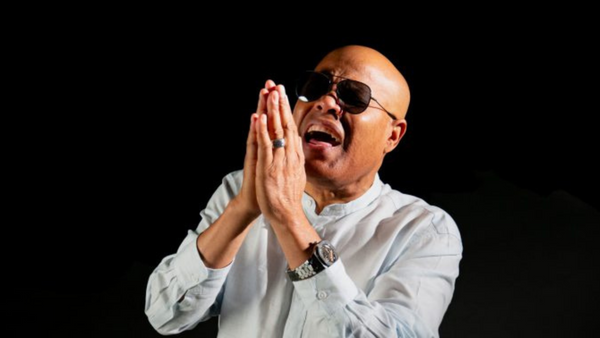
Estée Lauder faces its next fraught rendezvous with Wall Street on Tuesday, when the struggling Fortune 500 beauty giant reports its latest quarterly earnings. But if its executives, including its brand-new CEO, are nervous, they can take solace in one thing: This week’s report almost certainly can’t be as bad as their last one.
Back in October, while releasing a particularly dismal earnings statement, Estée Lauder—whose globe-spanning luxury brands include MAC, Aveda, Le Labo, and Clinique—shocked shareholders by slashing its dividend by nearly half to preserve cash. Not only did the company fail to put any upbeat lipstick on that pig, it withdrew its financial forecasts, the kind of action that is very triggering for investors. Shares fell 21% that November day, the biggest one-day drop ever for the 79-year-old company.
The fact that Estée Lauder had repeatedly lowered its forecasts over the prior two years only fanned the sense that executives didn’t have a handle on the business. And indeed, management suggested it didn’t have a sense of when its problems, led by its long, profit-decimating China sales slide, might end. “Estée Lauder was an incredible company…but given the collapse in profits, I'm not sure it still is,” famed investor Whitney Tilson of Stansberry Research wrote in a subsequent paper. Yes, it has a strong brand, Tilson added, but he slammed the company as “totally mismanaged.”
The numbers certainly back up critics like Tilson. In fact, the totemic beauty company is more than three years into a meltdown that has crushed both revenue and profits. It has also clobbered investors: Since hitting an all-time high of $374.20 in January 2022, shares have slid an astounding 78%.
In market capitalization terms, the stock tumble of the last three years has stripped more than $100 billion from the company’s value. That’s an especially painful punch for the founding Lauder family, which holds nearly 35% of the company’s outstanding shares (and 84% of voting power). The company declined to comment.
In its fiscal 2024, which ended on June 30, Estée Lauder reported revenue of $15.6 billion, down 12% from its 2022 peak. Sales were slipping, but profit was in free fall. Net earnings of $409 million were down 60% from the year before. And in the first quarter of the current fiscal year—the one reported on that disastrous October day—the company reported a net loss of $156 million, fanning fears of further deterioration.
“Totally mismanaged” or not, it’s clear the company has failed to adapt to a rapidly churning luxury market. What’s more, Estée Lauder is suffering today from having failed to pivot away from strategies that looked great as recently as three to five years ago. A huge bet on China’s luxury market under then-CEO Fabrizio Freda helped the company soar in the 2010s, but has become a major drag on results today; meanwhile, Estée Lauder skin care and cosmetics brands that took off with boomers and Gen X have failed to win fans among consumers under 40.
The company’s stumbles have coincided with a schism between two factions among the Lauders over how to arrest the decline, as the Wall Street Journal has reported. That schism pitted Jane Lauder—the company’s chief digital officer, who wanted Estée Lauder to make bolder moves to appeal to younger shoppers—against her cousin William Lauder, the former executive chairman, former CEO, and grandson of the company’s namesake founder, who had favored Freda’s strategies.
Over the past three months, Jane and William Lauder and Freda have all left the C-suite, so the investors’ call this week will be the first with longtime Estée Lauder insider Stéphane de La Faverie at the helm. The new CEO will get a chance to update investors on the progress, or lack thereof, in finally getting the company back on track.
It will be on de La Faverie to end the company’s sales hemorrhage in China, make the company’s global supply chain more effective, appeal to younger shoppers by tapping more reliably into sites like TikTok—and reenergize a core group of brands increasingly associated with older shoppers. And he’ll have to do it all while managing the expectations of a founding family that’s still very much in control—and won’t settle for also-ran status in the luxury race.
A great decade before the fall
For years under Freda, Estée Lauder was a juggernaut. Freda, a former Procter & Gamble executive who had led P&G’s mammoth snacks business, joined Estée Lauder in March 2008 as president and chief operating officer. Sixteen months later, he became CEO.
Investors and analysts credit the Italian-born and -educated Freda with bringing the financial and professional discipline instilled at P&G to the beauty company, as well as with modernizing its tech. Freda also benefited from being championed by William Lauder, his immediate predecessor as CEO, in navigating family matters.
Between the day Freda started in 2009 and the day of its 2022 all-time high, Estée Lauder shares rose 643%. In his early years, Freda sharpened the focus of the company—whose portfolio now includes 24 brands—to concentrate on the higher end and full-on luxury. The company’s revenue more than doubled from $7.8 billion in 2010 to a peak of $17.7 billion in 2022.

During the Freda era, Estée Lauder also made a lot of acquisitions aimed at winning over younger consumers. While the namesake Estée Lauder brands and others like luxe skin care product La Mer enjoy mammoth sales, they do cater to an older clientele. Freda’s acquisitions have included fragrance brand Le Labo, makeup line Two Faced, and skin care brands Decium from Canada and Dr. Jart from Korea.
More fatefully, Freda was early in making a big bet on the Chinese luxury market. That bet would profit Estée Lauder enormously for a while—but is haunting it today.
China syndrome
Like many Western luxury executives, Freda could not resist the call of the Chinese market. For years before the pandemic, retail experts predicted that China would rival, perhaps even overtake, the United States as the top luxury market in the world. It’s easy to see why: According to a McKinsey report from a few years ago, from 2008 to 2014 alone, the number of Chinese households purchasing luxury products doubled.
Soon enough, luxury malls mushroomed in hubs Shanghai and Beijing, boasting Tiffany and Louis Vuitton stores. With the Lauder family’s blessing, Freda pounced on the opportunity—seeding stores throughout the country and building a distribution network. Estée Lauder wound up being earlier than most Western beauty brands to enter China, establishing itself not only in the major cities but in smaller so-called Tier 2 and Tier 3 cities where Western brands were less present—but potential demand was high. It also built a big presence in “travel retail,” with stores in massive new airports and a major presence in duty-free shops, locations particularly popular with Chinese shoppers.
For a long time, Freda’s strategy worked: In 2014, Estée Lauder’s sales in the Asia Pacific were $2.23 billion; years of blistering growth brought that total to a peak of $5.49 billion in 2021. That year, Asia was a bigger market for the company than the Americas. That represented around 34% of Estée Lauder’s revenue that year, much greater exposure than most Western companies had to China—which made the company that much more vulnerable when the Chinese consumer story turned sour.
COVID, of course, was one culprit. In the early days of the pandemic, Asian consumers, like those in North America and Europe, spent more on skin care products—part of an overall consumer focus on wellness—lifting Estée Lauder’s sales. But soon enough, the pandemic wreaked havoc with the Chinese market. With travel curtailed, travel retail sales plummeted. Luxury items became expendable as consumers got nervous. As China struggled to recover economically from the pandemic, high unemployment among young Chinese consumers added to the pain, as did a growing inclination to try local brands.
Estée Lauder’s Asia Pacific business has fallen for three years in a row: Sales for fiscal 2024 came in at $4.89 billion, 16% below their 2021 peak. But falling revenue tells only part of the story. After all, China has proved vexing of late for many other Western companies, notably Apple and Starbucks, as well as French luxury conglomerate LVMH and rivals in the beauty industry like Procter & Gamble and Japan’s Shiseido.
But Estée Lauder made some particularly big investments, in anticipation of a China bonanza that fell like a soufflé, and those are now coming back to bite the company. For example, Estée Lauder invested $1 billion in 2018 to set up a manufacturing facility in Japan so it could more quickly serve Chinese consumers. That facility now produces less due to weaker demand, and the overcapacity is a drain on the company’s profit.
Supply-chain problems have also exacerbated the China crisis. According to a 2023 Bloomberg report, Estée Lauder had to send merchandise to duty-free shops in China months in advance so they were stocked, leaving the company with less room to react to any sudden or prolonged change in sales trends by changing up inventory. When China reopened in 2023 at long last, the company shipped a ton of merchandise—only to see those goods get stranded in stores, since their arrival coincided with a big slowdown in China’s luxury market there and its economy in general.
The company has been working ever since to clear out unsold inventory, at big losses, and it has taken longer than initially expected. That lingering problem is at the heart of why Wall Street is in wait-and-see mode—and there isn’t really much relief in sight. According to Bain & Co., mainland China’s luxury market shrank 18% to 20% in 2024, back down to 2020 levels. For this year, Bain expects sales to be flat before economic stimulus in China kicks in.
Home country blues
China is not the only market in which Estée Lauder has flailed. The company has lost market share in the United States, its home market, with French giant L’Oréal more than happy to pick up the slack, even in the so-called prestige segment of the market, an industry shorthand for luxury.
For years, the company’s U.S. revenue depended on sales of La Mer at Neiman Marcus or Saks (and occasionally Costco), MAC at Macy’s, or Aveda at Nordstrom. As department stores lost much of their luster in the 2010s, Estée Lauder shifted more of its sales to popular, and comparatively down-market, but faster growing retailers like strip-mall fixture Ulta Beauty and LVMH’s Sephora. “There is nothing wrong with strip malls if Ulta has a nice presentation, traffic, training, and experience,” Freda told Fortune a few years ago.
But expanding into more retail platforms hasn’t protected the company’s U.S. sales. It’s not like there’s no opportunity there: Data research firm Circana says that the U.S. prestige market rose 7% in the first nine months of 2024. But that just underscores Estée Lauder's anemic Americas sales, primarily made up of the U.S., which rose only 1% in fiscal 2024.
These struggles have prompted Estée Lauder to do what would have been unthinkable just years ago. To revitalize its namesake brand that helped Estée Lauder herself, née Josephine Esther Mentzer, transform the beauty industry in 1946, the company launched a store on Amazon in October. That move was a source of division within the family, the Wall Street Journal reported in 2023. Leonard Lauder, son of the founder and father of William, was opposed to selling on Amazon, fearing it would dent the brand’s cachet.
A generation gap
As the company’s late arrival to Amazon suggests, part of Estée Lauder’s woes seems to be generational. Despite Freda’s purchases of some youth-friendly brands, the company has struggled to adapt to the shopping habits and tastes of millennials and Gen Z, even as those younger consumers have grown into a bigger segment of the luxury market.
The company has suffered from a relatively slow, stodgy pace of innovation in a world where new beauty brands are promoted nonstop by influencers. “In the last 10 years, the dynamic of innovation has come from newer brands that have just literally bubbled up from somebody's kitchen sink aimed at a younger audience looking for cleaner, healthier, more effective products,” says Wendy Liebmann, CEO at WSL Strategic Retail. “Lauder itself was loath to disrupt some of their more established businesses.”
One such influencer-driven trend has been the craze for dermatological products—skin care wares formulated to repair, or at least avoid damaging, users’ skin. L’Oréal jumped on the dermatological product craze before Estée Lauder did with a roster that includes CeraVe, acquired in 2017, and La Roche-Posay, bought the following year. In contrast, it was 2021 before Estée Lauder became a majority owner of Canadian company Deciem, drawn to its lower pricing and its inroads with the skin care aficionados called “skintellectuals.”
With social media driving demand for novelty, younger, nimbler brands have been capitalizing. e.l.f Beauty, for instance, has nearly quadrupled in sales since 2020, becoming a billion-dollar brand last year, some of that at Lauder’s expense; it’s beloved by young, Instagram-savvy shoppers, and profitable thanks to low operating costs.
A tall order
Addressing these snags adds up to a big to-do list for the new CEO. Since de La Faverie was named CEO at the end of October, shares have risen about 25% but remain very far from their highs from a few years ago. At the same time, de La Faverie was a major architect of Freda’s ultimately flawed strategy, and that fact has tempered investors’ enthusiasm. In a recent research note, Wells Fargo analysts said they “don’t have confidence” yet in the durability of any green shoots.

De La Faverie will also have less immediate guidance from the founding family: While the board is still full of Lauders, with the departure of Jane and William the C-suite is without a Lauder for the first time ever.
Analysts agree that de La Faverie was likely chosen because he knows this complex company deeply and can act quickly; the company seems to believe that such experience is more important than hiring a change agent experienced with turnaround. A recent McKinsey report predicts the beauty sector will reach $590 billion by 2028, and Estée Lauder must be ready to grab its share.
Freda himself told investors in October what his successor needs to do. “We need brand builders, but we need also people that will act with urgency, speed, courage to make the needed changes,” he said. Now his apprentice will get the chance to show whether he can help this iconic company complete its makeover.







